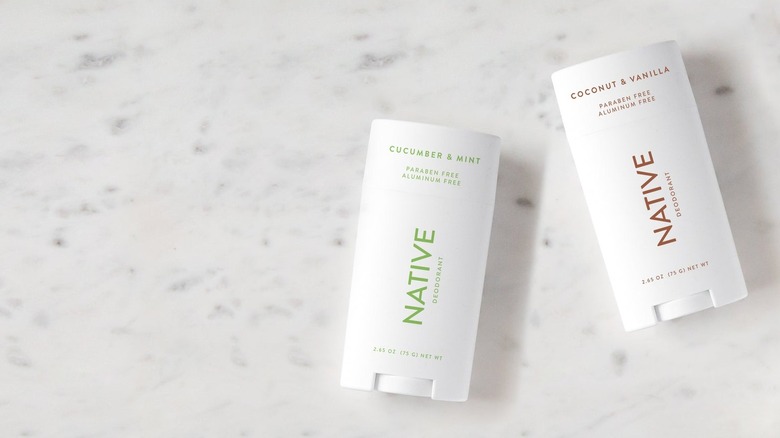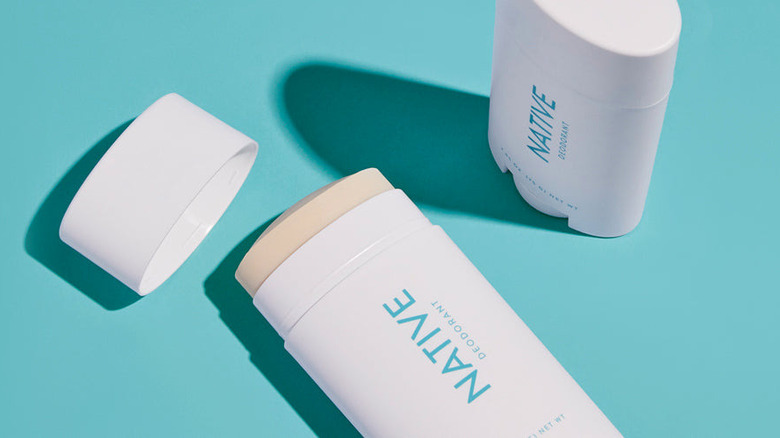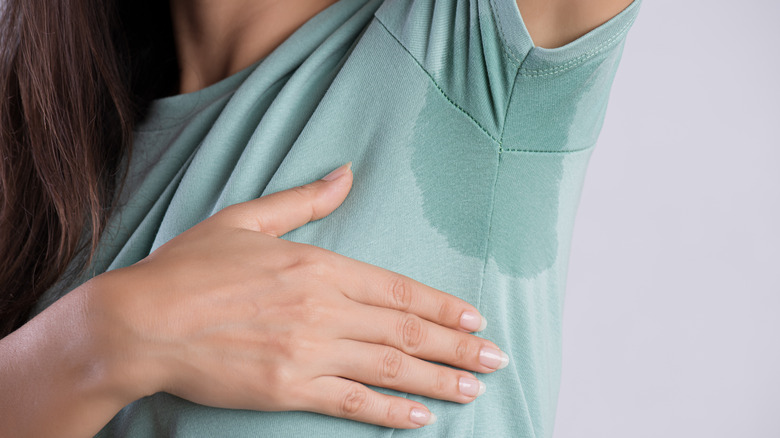Does Native Deodorant Make You Sweat More?
Whether you're into natural products or not, it's likely that you've heard of Native, a deodorant and personal goods brand that's been rising in popularity over the last few years. As mentioned by The Quality Edit, the company's aluminum- and paraben-free formula and cruelty-free practices have set it apart from other deodorant products while appealing to an increasingly eco-conscious consumer.
Launched in 2015, Native began with a direct-to-consumer business model but expanded to retail settings after being acquired by Procter & Gamble in 2017 (per Practical Ecommerce). So, if you've only just noticed a new line of deodorant in the supermarket aisle, that's because it likely just recently appeared there.
Because it's a natural deodorant, Native works differently than its traditional counterparts. For those deciding to switch, this can lead to questions about how long an application can be expected to last, how effective the product is against B.O., and how the formula impacts underarm sweat.
How Native is different from traditional deodorant
Native deodorant won't make you sweat more, but the transition to a non-aluminum deodorant might. To understand why this is, it's helpful to break down the typical differences between the average deodorant and those that label themselves as natural.
For starters, it's important to note that the FDA does not have a regulated definition for "natural" cosmetic products. So, when a company labels its hygiene products as natural, there are no guidelines that outline what this means.
There is also a relevant difference between deodorants and antiperspirants, though many products are a combination of both. Everyday Health explains that antiperspirants use aluminum salts to prevent underarm sweating, while deodorants target body odor with an antimicrobial ingredient, typically triclosan.
Whereas triclosan is a synthetic antimicrobial, natural deodorants typically opt for non-artificial ingredients that have antibacterial properties, such as coconut or tea tree oils. They also aim for absorptive substances like baking soda and use essential oils for a natural approach to frangrane, per Healthline.
However, individual ingredient lists should be consulted since there is no regulated standard for what can be considered a natural cosmetic product. Luckily, Native is generally transparent about the ingredients used in its products.
Accordingly, Native deodorants use shea butter, coconut oil, baking soda, and magnesium hydroxide as main ingredients. Reviewed breaks these down by explaining that shea butter and coconut oil keep underarms moisturized while magnesium hydroxide and baking soda prevent odor.
So what does this mean for sweat?
With this in mind, you're probably wondering what it all has to do with sweating. As mentioned, antiperspirants reduce underarm sweat to curb the body odor-causing bacteria that grow in moist conditions (per Glamour).
Native, and many other natural deodorants, do not contain the same ingredients found in typical antiperspirants that prevent sweating. As explained by Kaia Naturals, the transition to a non-aluminum deodorant can therefore cause an initial change in underarm perspiration and odor.
While this might feel like it's being caused by the natural deodorant, it's actually the body "detoxing" aluminum-based ingredients. Although it will depend on the individual, this transitional period typically lasts a few weeks, after which perspiration and odor should stabilize (per Real Simple).
It's important to note that if you're used to the reduction in sweat caused by antiperspirants, then Native may still feel more sweaty in comparison even after the transitional phase (per The Quality Edit). The deodorant is not causing this sweat, but it's just the body's natural mechanism.
If you're interested in trying out Native deodorant, don't let this transitional phase deter you. There are lots of great reasons to use natural deodorant, you just have to find the product that works best for you.


